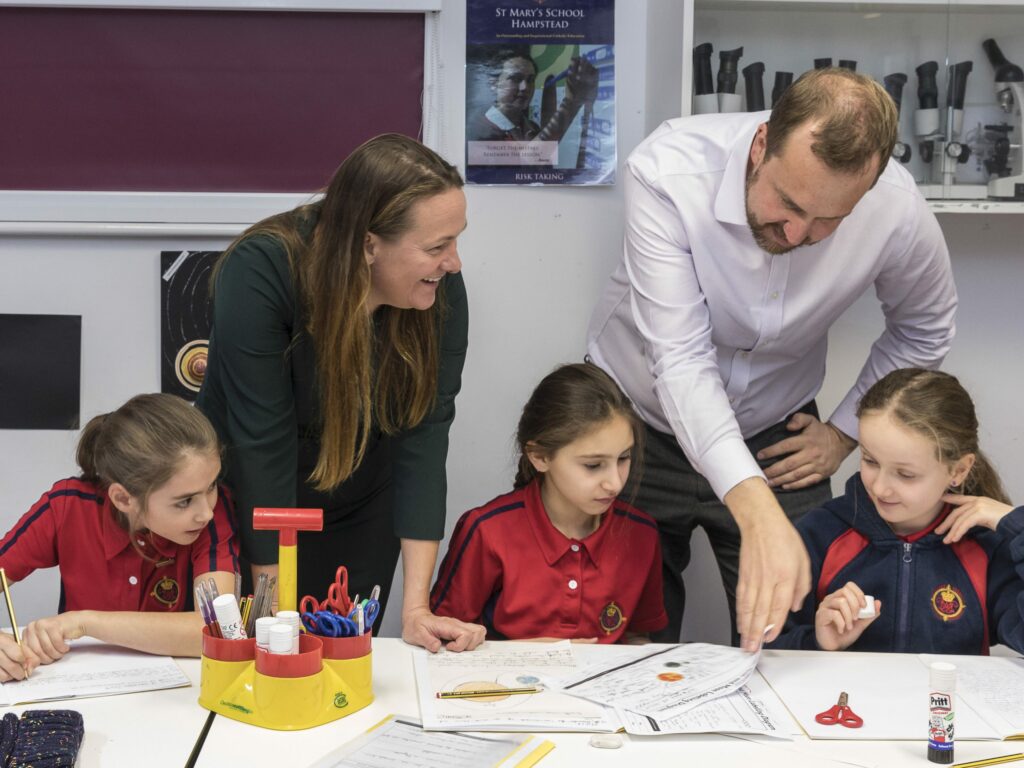When we were advised by the Government back in March 2020 that the school needed to close, none of us quite expected the long journey that lay ahead. As we reflect, it has become clear that what this period has shown us, more than anything, is the indomitable spirit that the pupils, parents and teachers at St Mary’s all share.
 Twelve months ago, the phrase “Distance Learning” wouldn’t have meant much to many of us. Behind the scenes, in the world of pedagogy, there were already some practical applications of this, although these were largely experimental and part of a blended learning approach that the teachers of older children had adopted as technologies became accessible enough to allow for it. Tools such as Microsoft Teams and Google Classroom were already being used in many schools, but more as collaborative applications. Indeed, at St Mary’s, Google Classroom wasn’t anything new and the children had already been making use of it, albeit on a small scale and probably without much cognisance of exactly what they were using. The closure of school buildings in early 2020, therefore, was a huge step change for everyone.
Twelve months ago, the phrase “Distance Learning” wouldn’t have meant much to many of us. Behind the scenes, in the world of pedagogy, there were already some practical applications of this, although these were largely experimental and part of a blended learning approach that the teachers of older children had adopted as technologies became accessible enough to allow for it. Tools such as Microsoft Teams and Google Classroom were already being used in many schools, but more as collaborative applications. Indeed, at St Mary’s, Google Classroom wasn’t anything new and the children had already been making use of it, albeit on a small scale and probably without much cognisance of exactly what they were using. The closure of school buildings in early 2020, therefore, was a huge step change for everyone.
As you will have noticed over the past year or so, the Distance Learning programme here at St Mary’s has been constantly evolving. The speed of change and smooth-running of the transition is thanks largely to the willingness of the teachers to upskill themselves at speed (within a week in some cases back in March 2020), alongside experts within the staff who stepped up immediately to support and help drive the changes. Of course, the parents and families were critical in the rollout and, alongside their children, also had to upskill and adapt at pace. We have never underestimated the difficulty of juggling full-time jobs alongside supporting your children with this new way of learning.
The deliberate and planned changes to the Distance Learning offering have always been led by the needs of the children, alongside current research and the practicalities of how we deliver learning. The Education Endowment Foundation, a major research body in the UK, found that there are some key elements on which Remote Learning relies. Firstly, the teaching quality is more important than how the lessons are delivered. We have arrived at a point now where we attempt to balance the delivery styles of lessons, between live input, pre-recorded sessions and high quality resources. Studies have shown that different approaches to Remote Learning suit different types of content and pupils. Our teachers are focused on maintaining the same high quality of teaching that your children receive whilst in the building physically and this underpins the delivery, whether in or out of school.
There is also evidence that maintaining peer interactions and links to the school is important for motivation and learning outcomes. This is why we have focussed on continuing with Whole School Events such as Weekly Assemblies, Celebration Assemblies, and even Prize Giving back in summer 2020. Alongside this, we have used scaled down meetings within year groups and Forms, in order to allow as many opportunities for the children to catch up with their peers, “see” their teachers and feel the consistent and regular link with the school. Teachers have also been meeting one-to-one with the children in order to understand how they are personally and what they might need support with.
I believe there will be many positives that emerge from this current situation. First, the independence of the children. They are being supported to work on their independence and to take more ownership of their learning journey. This is a vital skill as they move through school and life more generally. It has been found that learning outcomes can improve through this increased ability to work independently and we hope that children will take this forward with them when they return to school.
Next, technology. It is self-evident that the ability to use technologies fluently and across a range of applications is essential for the next generation. This period has forced us into speeding up the process of learning new technological skills and adapting to situations quickly through the use of technology. These skills won’t be wasted and will certainly not become redundant after the pandemic. As a school, we are already planning ahead to how we will continue to make use of the technologies now in place to better support the children in more “normal” times. This might be as simple as being able to set and submit homework through Google Classroom; it may extend to the many collaborative opportunities that present themselves when children are all working on a digital document together, analysing and synthesising input from across a class within one session. The possibilities are seemingly endless, and certainly exciting. We have formed links with Google throughout this past year and are working with them as they develop new functionality across their platforms.
For me, there has been one over-riding thought as time has gone on: School is more than the teaching that happens within the building. School is a community of people who come together under a common goal and a shared interest in providing the very best opportunities for the children. The teachers at St Mary’s and the pupils under their care have continued to thrive in these challenging circumstances by virtue of how close we are as a community. Of course, we want nothing more than for the children and their families to return to school as soon as possible. When this happens we will take stock, reflect and realise how fortunate we are and how grateful we are to welcome back the sense of normality and comfort that comes from being together in “real life”. In the meantime, we continue to strive to deliver the very best outcomes for your children and thank you all for your incredible support with this.
Martin Otter
Deputy Head – Academic




